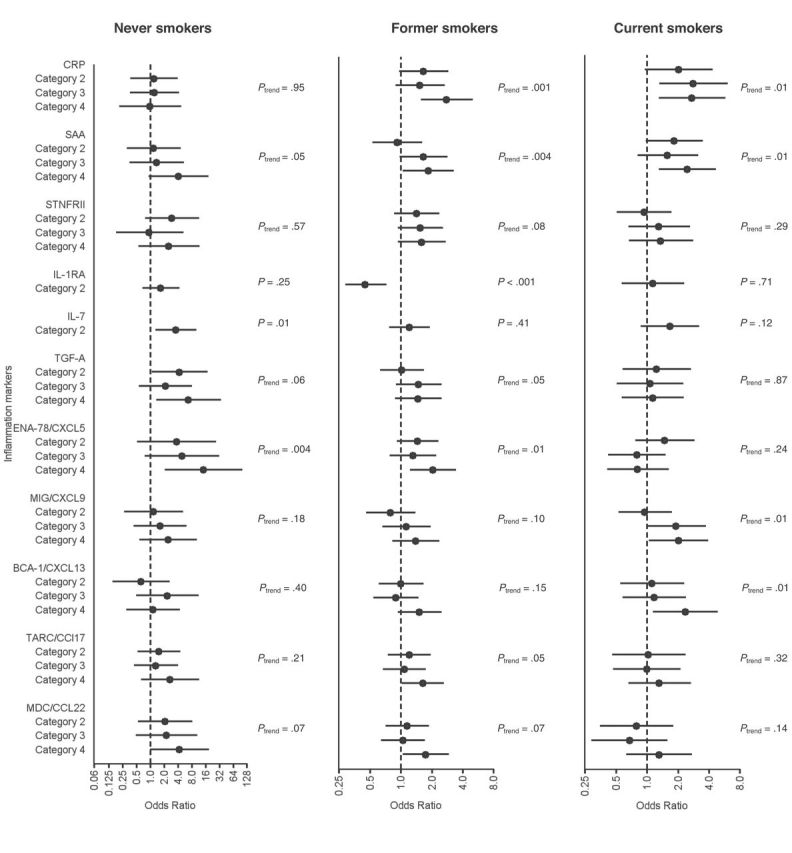Figure 1.

Associations of 11 inflammation markers with lung cancer risk stratified by smoking status. Odds ratios and 95% confidence intervals comparing the highest level vs lowest level from conditional logistic regression models are shown. All models were adjusted for matching factors (age, sex, follow-up time, randomization year, pack-years of smoking, and time since quitting) as well as for personal history of bronchitis/emphysema, history of coronary heart disease or heart attack, family history of lung cancer, use of aspirin/ibuprofen, body mass index, race, and education. P values for trend across marker categories were estimated through the use of markers as ordinal variables with 1 degree of freedom. Multiplicative statistical interactions of inflammation marker associations across smoking status were evaluated using the Wald test. Statistically significant differences by smoking status were only observed for the association between interleukin 1 receptor antagonist (IL-1RA) and lung cancer. All P values were two-sided. BCA-1/CXCL13 = B cell–attracting chemokine 1; CRP = C-reactive protein; ENA78/CXCL5 = epithelial neutrophil-activating peptide 78; IL-7 = interleukin 7; MDC/CCL22 = macrophage-derived chemokine; MIG/CXCL9= monokine induced by gamma interferon; SAA = serum amyloid A; sTNFRII = soluble tumor necrosis factor receptor 2; TARC/CCL17 = thymus activation regulated chemokine; TGF-A = transforming growth factor alpha.
